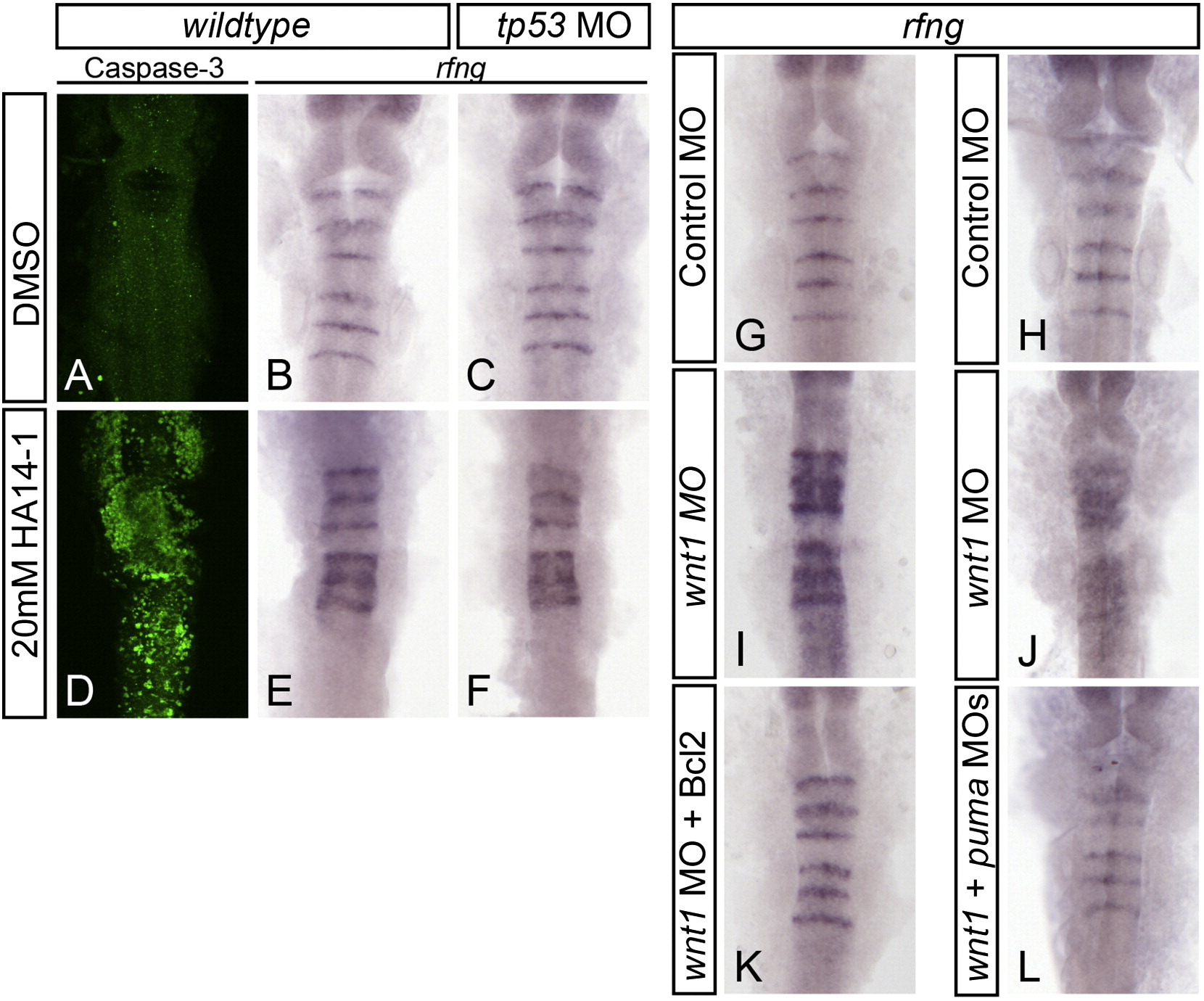Fig. 4
Pro-apoptotic Bcl protein activity is necessary and sufficient for ectopic expression of boundary markers. 16ss embryos treated for 2.5 h with 20 μM Bcl2 inhibitor HA14-1 undergo extensive apoptosis (anti-active caspase3 staining in green channel, compare A and D), and express ectopic rfng (compare B and E). Ectopic rfng expression induced by HA14-1 treatment is still present in HA14-1-treated tp53 morphants (compare E and F), demonstrating that Tp53 is not required. To assess the requirement for Bcl activity in MO induced ectopic rfng expression, wnt1 morphant embryos were co-injected with either Bcl2-GFP mRNA (G, I, K) or a morpholino to knockdown the pro-apoptotic Bcl gene puma (H, J, L). Both approaches rescued the expanded rfng expression (decreased ectopic rfng in K compared to I, L compared to J). All four experiments place ectopic rfng downstream of pro-apoptotic Bcl activity.
Reprinted from Developmental Biology, 350(2), Gerety, S.S., and Wilkinson, D.G., Morpholino artifacts provide pitfalls and reveal a novel role for pro-apoptotic genes in hindbrain boundary development, 279-289, Copyright (2011) with permission from Elsevier. Full text @ Dev. Biol.

